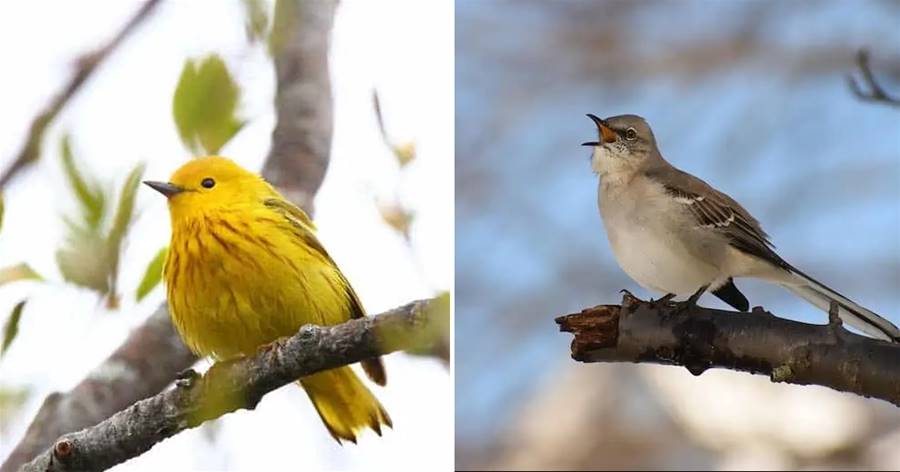

Birds that chirp in the morning are early risers getting ready for their day to start. The early hours of the day are usually too dark for them to start foraging and safer from predators that aren’t hunting yet. They can sing for various reasons, including defending their territory, communicating, attracting mates, or raising their chicks.
Scientists call the collective chirps, tweets, and singing of morning birds the “dawn chorus.” The dawn chorus can begin as early as 4 am and last for several hours. The chorus is typically at its height, with multiple birds contributing, around 30 minutes before and after sunrise.
Here are 12 birds you can hear chirping in the early morning hours and how to identify them if you’re listening to the dawn chorus.
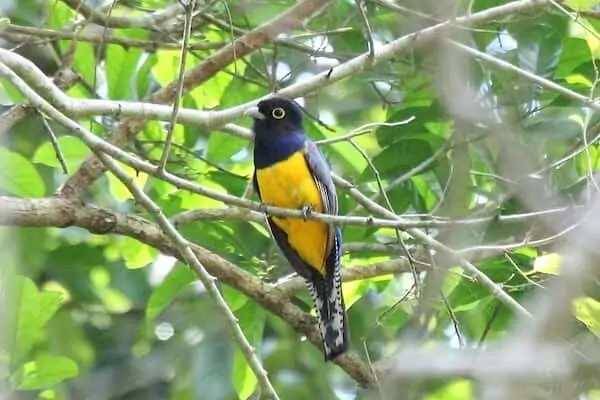
Scientific name:
The gartered trogon is a colorful bird that chirps a rolling chattering sound or sings a long series of hollow and rapid notes sounding like kyu-kyu-kyu. These birds have very large, yellow-ringed eyes allowing them to see well in low light and also be among the first to contribute to the dawn chorus before sunrise.
You can find the gartered trogon in humid areas, such as tropical lowland forests. Their range includes central Mexico, Central America, Columbia, and down to Peru and Venezuela.
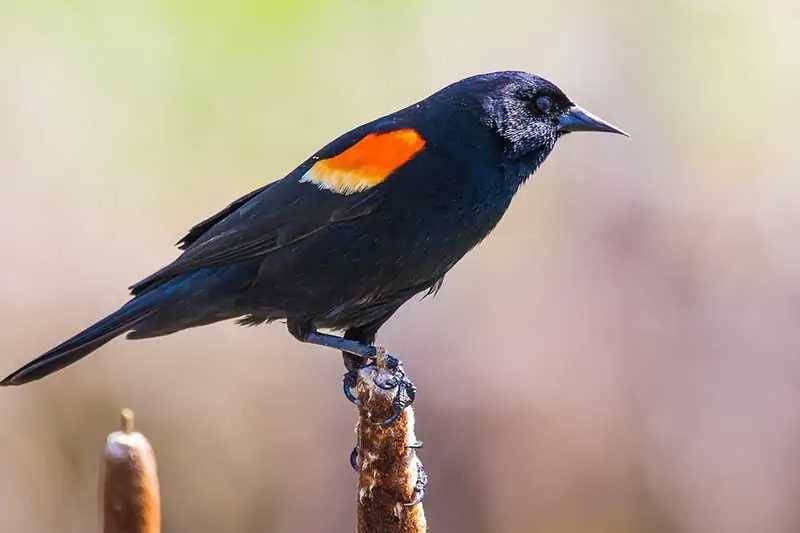
Scientific name:
Red-winged blackbirds are another species that will sing early before dawn and even sing under artificial light. Males produce the commonly heard song, a “conk-la-reee” starting with an abrupt note and ending in a trill. Red-winged blackbirds are most common in marshes and wetlands, but also be found in fields, or just about anywhere.
They can be found throughout the U.S. all year, and throughout Canada during the summer months. Some travel to the southern states or even Mexico for the winter. In areas with temperate climates, you can hear them singing throughout the year. They get their name from the red shoulder patch that stands out against their black bodies.
In other parts of the world such as Europe and North Africa, the common blackbird is also one of the first songsters in the early morning hours.
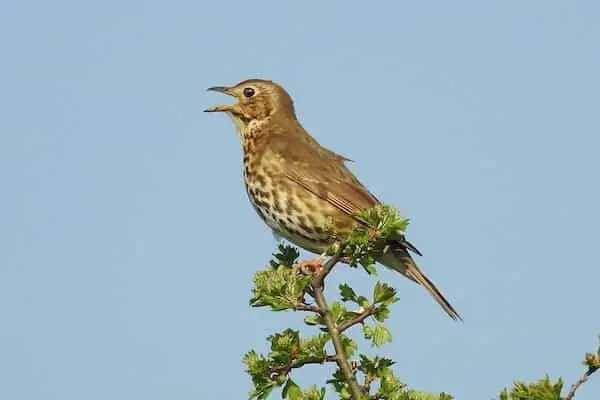
Scientific name:
Thrushes are another species that start the dawn chorus, typically an hour before sunrise and right after blackbirds. You can recognize their styles by short and fluty repeated phrases with pauses in between that sound more chatty than musical. Males are known to be very active singers, especially during the breeding season.
The song thrush is mainly found in northern Africa, western Europe, and the Middle East during the winter. They breed in the United Kingdom, Scandinavia, and most of Russia.

Scientific name:
A species of leaf warbler, the common chiffchaff, is a small olive-brown bird that is sometimes only 3.5 inches long. Their morning chirps are a repeated combination of two notes, typically descending or reversed. As their name suggests, it sounds similar to a “chiff chaff chiff chaff” chant.
You can find these birds in deciduous forests and woodlands throughout Europe and Asia. They typically spend the winter in South Asia, North Africa, and southern Europe. Listen for their chiff chaff song at the start of spring.
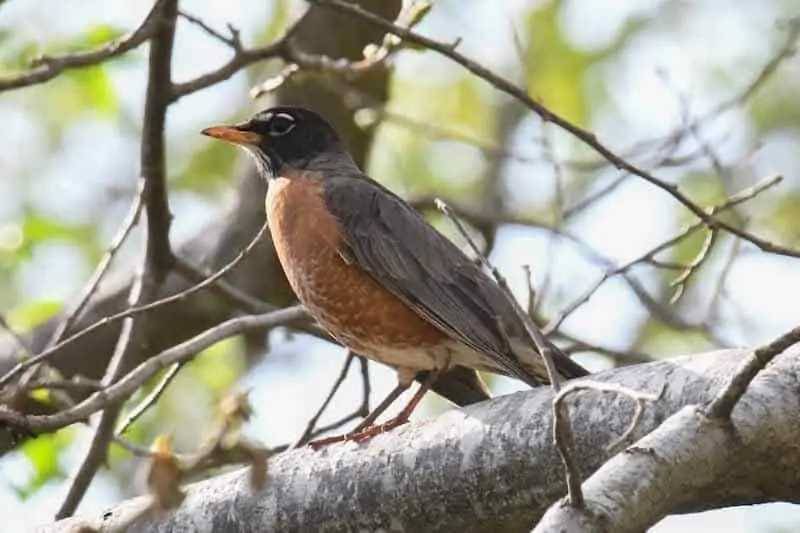
Scientific name:
The is among the first birds to contribute to the dawn chorus. Despite weighing only 2.7 ounces, these birds have a powerful song with varying phrases that have a rising and falling quality. They make 10 or so whistle sounding syllables in succession described as “cheerily, cheer up, cheer up, cheerily, cheer up”. They will also chirp repeated chirrs that can sound like a chuckle.
These birds can be found in the U.S. all year, and throughout Canada during the breeding season. Robins are associated with spring and that is when you will hear their morning song most frequently. I have also found that they are one of the last birds I hear in my yard in the evening as well.

Scientific name:
The little grey tufted titmouse is recognizable by the crest of grey feathers at the top of its head. It also has a unique song and echoing voice that creates a crisp, whistled “peter-peter-peter” sound that carries in the air. Although a morning chirper, these birds tend to start their calls when it’s light enough for them to see.
The tufted titmouse lives mostly in deciduous forests, woodlands, and groves but can also be found in city parks if there are trees large enough.

Scientific name:
Common pheasants, also known as ring-necked pheasants in North America, are large ground birds. Males are quite flashy with their multi-colored head, patterned body and long tail. Females are a duller speckled brown. The males will crow loudly all day during the springtime, especially at dawn and dusk.
Native to Asia and certain areas of Europe, these birds have been introduced elsewhere as game birds, including in North America. Their distribution is spotty across the U.S., most states in the northern half of the country have some population, but there are also pockets of them in Texas, California and New Mexico. They are a popular game species, and are considered the world’s most hunted bird. Although these birds can fly pretty fast over short distances, they prefer to run.

Scientific name:
Orioles are brightly colored birds with a full and rich whistling tone. Their chirps consist of short series of notes paired together, lasting 1 to 2 seconds, and repeated 2 to 7 times. Males sing in the spring to defend their breeding territory. You are more likely to see them high up in the trees where they like to search for insects in the upper foliage. Perhaps part of the reason they join the dawn chorus is being able to get the first morning light at the tops of the trees.
You can find these birds mostly in central and eastern North America during the spring and summer months.

Scientific name:
One of the most iconic birds of the Eastern U.S, cardinals are well-known morning singers. Males may sing throughout the year in some places, but they are best known for their spring and early summer singing throughout their range. They are known to have many songs and calls, but the most common are a string of two-parted whistles (“cheer, cheer, cheer or birdie, birdie, birdie”) that end in a slow trill.
can be found in the eastern half of the U.S. and Mexico all year long. I have often encountered a singing cardinal when heading out to my car for my commute to work on cold spring mornings.

Scientific name:
Common chaffinches have a cheery morning song that they repeat over and over. Males will sometimes chirp a descending rattle of notes before an accelerated ending. Some people used to believe these birds can predict incoming rainstorms. However, you might not want to rely solely on them as your weather forecast!
You can find these birds widespread throughout Europe as the most common finch species. Their range also extends to western Asia, the Canary Islands, and northwestern Africa.
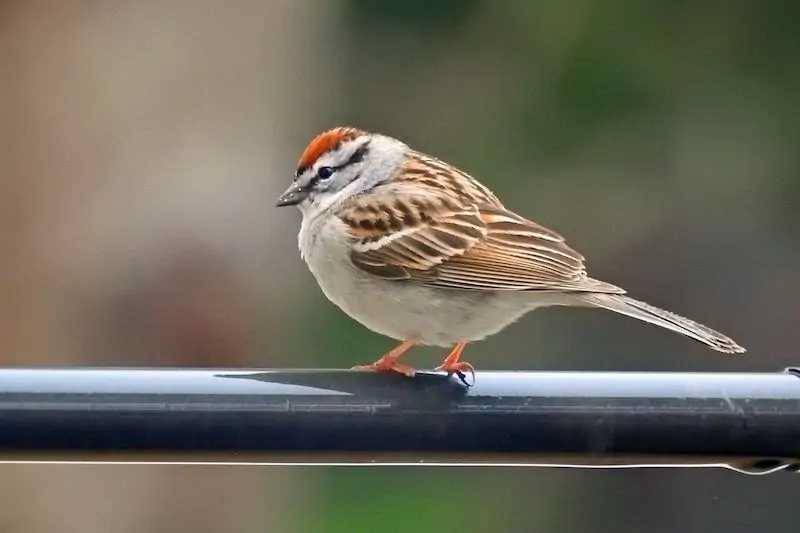
Scientific name:
The chipping sparrow has a long trill that’s evenly spaced and almost mechanical sounding. These birds chirp most actively at dawn and usually do so to defend their territories from other birds. However, if you hear them later during the day, it’s probably for mating reasons.
Chipping sparrows are one of the more easy to
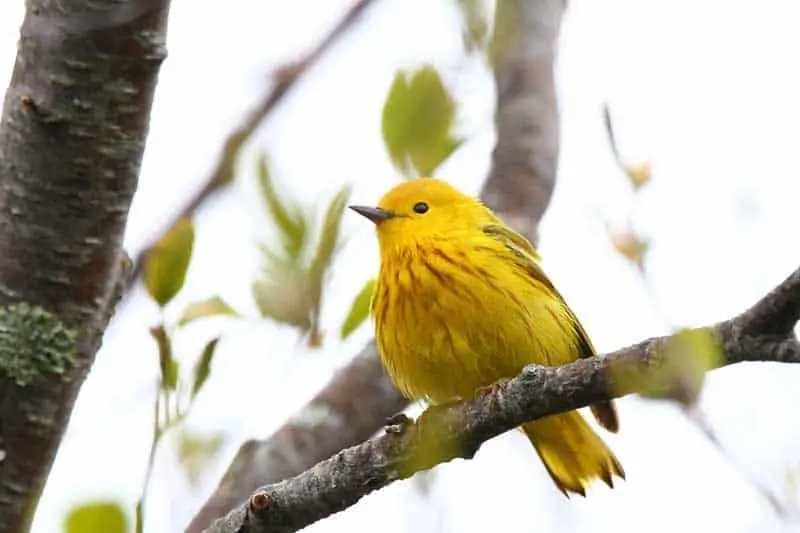
Scientific name:
Most members of the warbler family are early morning singers. One of the more conspicuous and easy to find warblers is the yellow warbler. They make a series of 6 to 10 whistled notes with a sweet tone, that accelerate and end on a rising note. They also sometimes make various short chip sounds with a metallic or buzzing quality. You’ll find them singing on spring and early summer mornings, and may repeat their song up to 10 times a minute.
Yellow warblers winter in Central and South America, then come to the U.S. and Canada in the spring and summer to breed.
